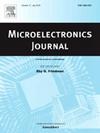Behavioral modeling of power amplifiers using the boundary-equidistant sampling strategy
IF 1.9
3区 工程技术
Q3 ENGINEERING, ELECTRICAL & ELECTRONIC
引用次数: 0
Abstract
A genetic algorithm (GA) optimized back propagation (BP) neural network based power amplifier (PA) modeling method is proposed, which employs the boundary-equidistant sampling method for dividing the training data and validation data in the case of multidimensional data. The differences in modeling accuracy before and after optimization of the BP neural network are compared, and the differences in modeling accuracy under different sampling strategies are compared. The results show that the BP neural network optimized based on GA has higher modeling accuracy. The borderless sampling method proposed in this paper not only ensures the uniformity of the sampled data, but also covers the critical data at the border.
基于边界等距采样策略的功率放大器行为建模
提出了一种基于遗传算法(GA)优化的BP神经网络的功放建模方法,该方法在多维数据情况下采用边界等距采样法划分训练数据和验证数据。比较了BP神经网络优化前后的建模精度差异,以及不同采样策略下的建模精度差异。结果表明,基于遗传算法优化的BP神经网络具有较高的建模精度。本文提出的无边界采样方法不仅保证了采样数据的均匀性,而且覆盖了边界处的关键数据。
本文章由计算机程序翻译,如有差异,请以英文原文为准。
求助全文
约1分钟内获得全文
求助全文
来源期刊

Microelectronics Journal
工程技术-工程:电子与电气
CiteScore
4.00
自引率
27.30%
发文量
222
审稿时长
43 days
期刊介绍:
Published since 1969, the Microelectronics Journal is an international forum for the dissemination of research and applications of microelectronic systems, circuits, and emerging technologies. Papers published in the Microelectronics Journal have undergone peer review to ensure originality, relevance, and timeliness. The journal thus provides a worldwide, regular, and comprehensive update on microelectronic circuits and systems.
The Microelectronics Journal invites papers describing significant research and applications in all of the areas listed below. Comprehensive review/survey papers covering recent developments will also be considered. The Microelectronics Journal covers circuits and systems. This topic includes but is not limited to: Analog, digital, mixed, and RF circuits and related design methodologies; Logic, architectural, and system level synthesis; Testing, design for testability, built-in self-test; Area, power, and thermal analysis and design; Mixed-domain simulation and design; Embedded systems; Non-von Neumann computing and related technologies and circuits; Design and test of high complexity systems integration; SoC, NoC, SIP, and NIP design and test; 3-D integration design and analysis; Emerging device technologies and circuits, such as FinFETs, SETs, spintronics, SFQ, MTJ, etc.
Application aspects such as signal and image processing including circuits for cryptography, sensors, and actuators including sensor networks, reliability and quality issues, and economic models are also welcome.
 求助内容:
求助内容: 应助结果提醒方式:
应助结果提醒方式:


